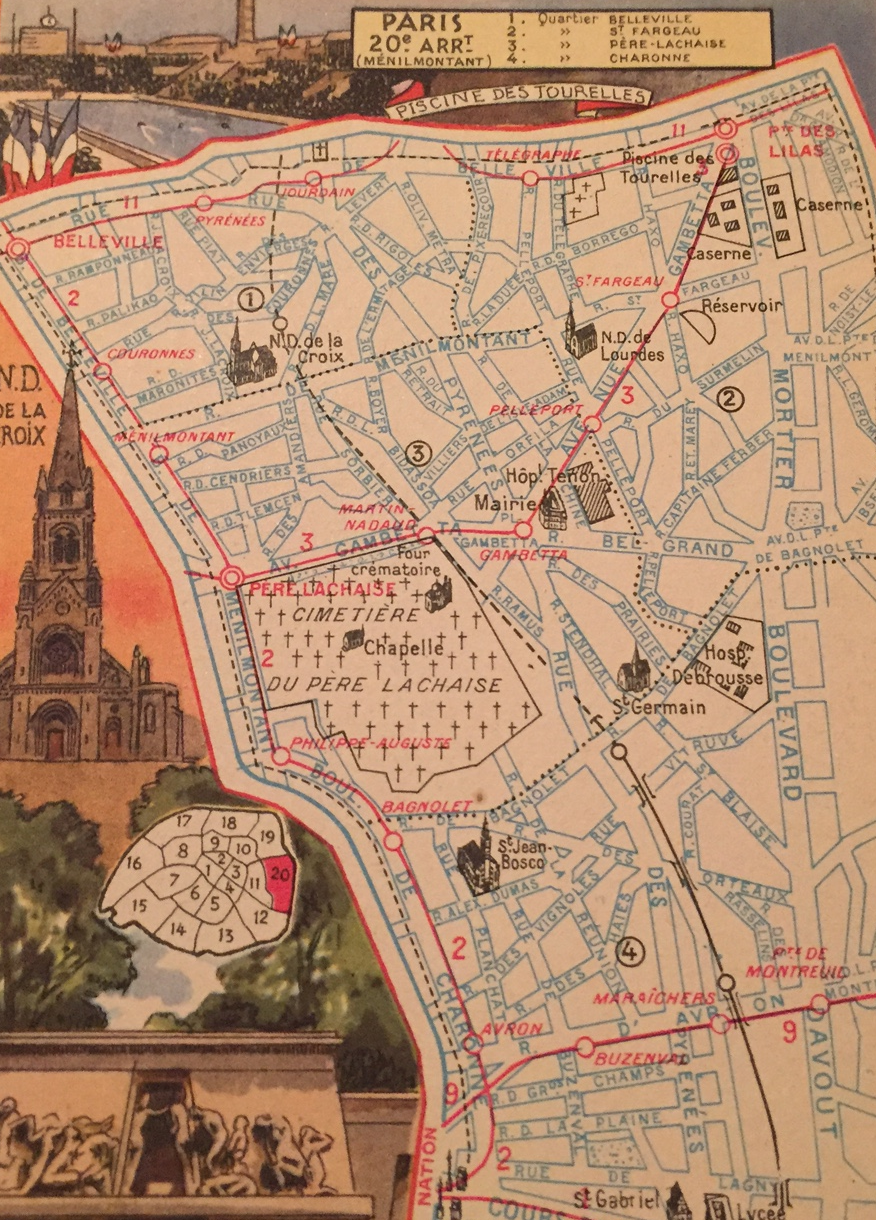Paris Overview
Paris Explained
For someone just visiting for a couple of days then Paris is a very easy city to explore. For a start the centre is rather small compared to London with two and a half million people living in 20 districts or arrondissements – just look for the white and blue plaques on every street corner which tell you where you are. A District or Arrondissement is then split into Quarters. Number one district begins beside the River around the Louvre and the other districts just spiral outwards from there like a snail until you reach the edges of central Paris with districts 19 and 20 in the top right ( north east).
Both London and Paris are divided by Rivers but here in Paris there are also islands in the River and both banks of the river Seine are equally interesting in terms of art,architecture, history, shopping and attractions.
Here’s a rough idea of the breakdown of Paris with the most useful metro stations.
Number One and Two Districts are on the right bank of the River and are centred round the Louvre Museum, the Palais Royal Gardens, the wonderfully elegant Place Vendome with the Ritz Hotel , with the Stock Exchange and old National Library in the Second district surrounded by some fascinating covered passageways full of interesting shops. Metros Concorde, Tuileries,Palais Royal.
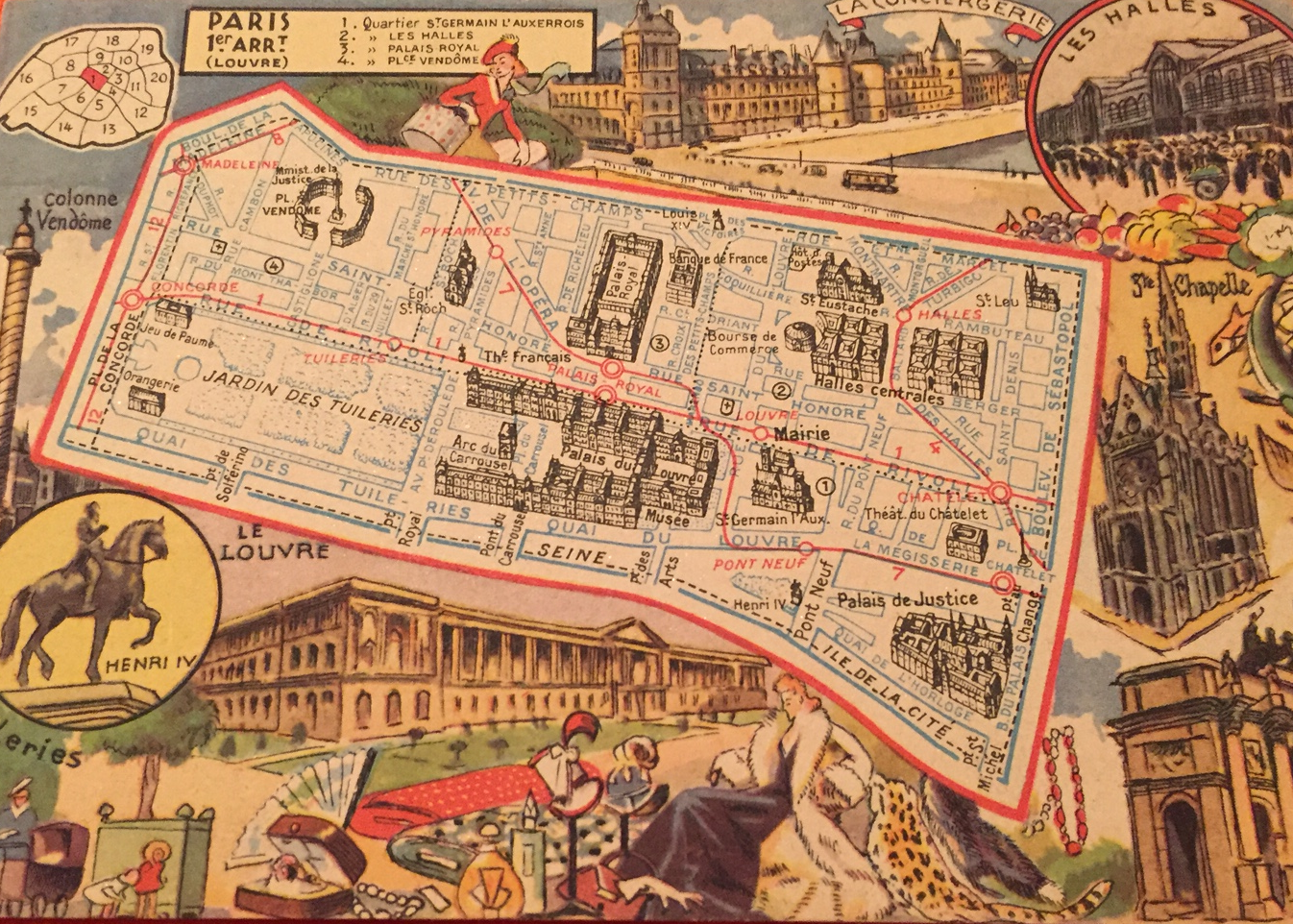
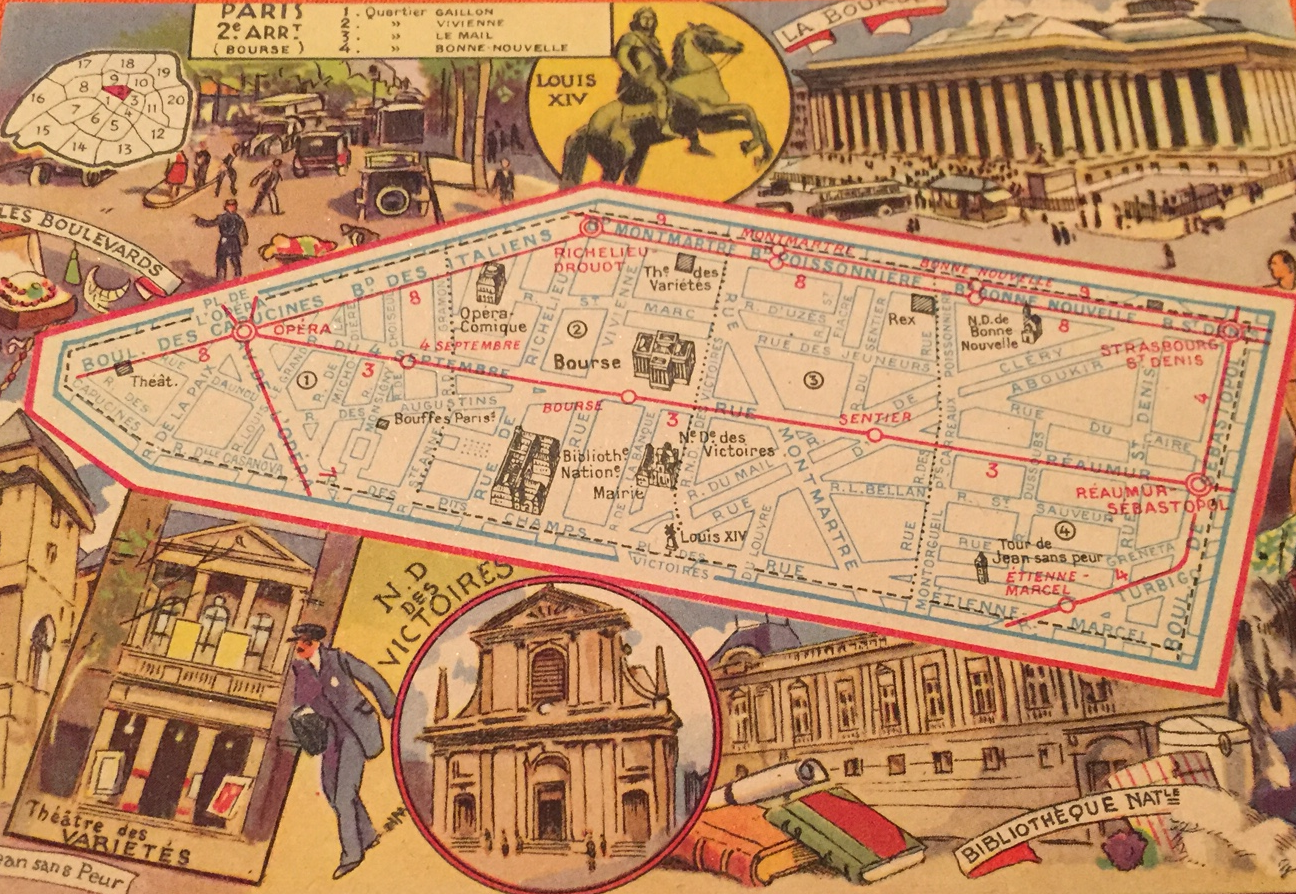
Number Three and Four Districts cover essentially the old Aristocratic Quarter known as the Marais ,great 17th and 18th century buildings with contrasting Museums from the Pompidou Centre looking like an oil refinery to the Picasso Museum in an elegant Hotel or Town House and hidden Squares like the beautiful Place des Vosges. Jewish and Gay Paris are also hidden away in this area.Metros Saint Paul, Hotel de Ville,Bastille. The Two Islands called Cité and Saint Louis are technically included in the 4th district but they are very much an area on their own and comprise of the historical heart of the city with the Cathedral of Notre Dame, the flower market, the old palace of the Kings of France now part Law court and part Museum called the Conciergerie together with the splendid 13th century Sainte Chapelle. The Saint Louis Island is mostly an exclusive residential district with one main street full of interesting shops, restaurants and art galleries. Metro Cité.
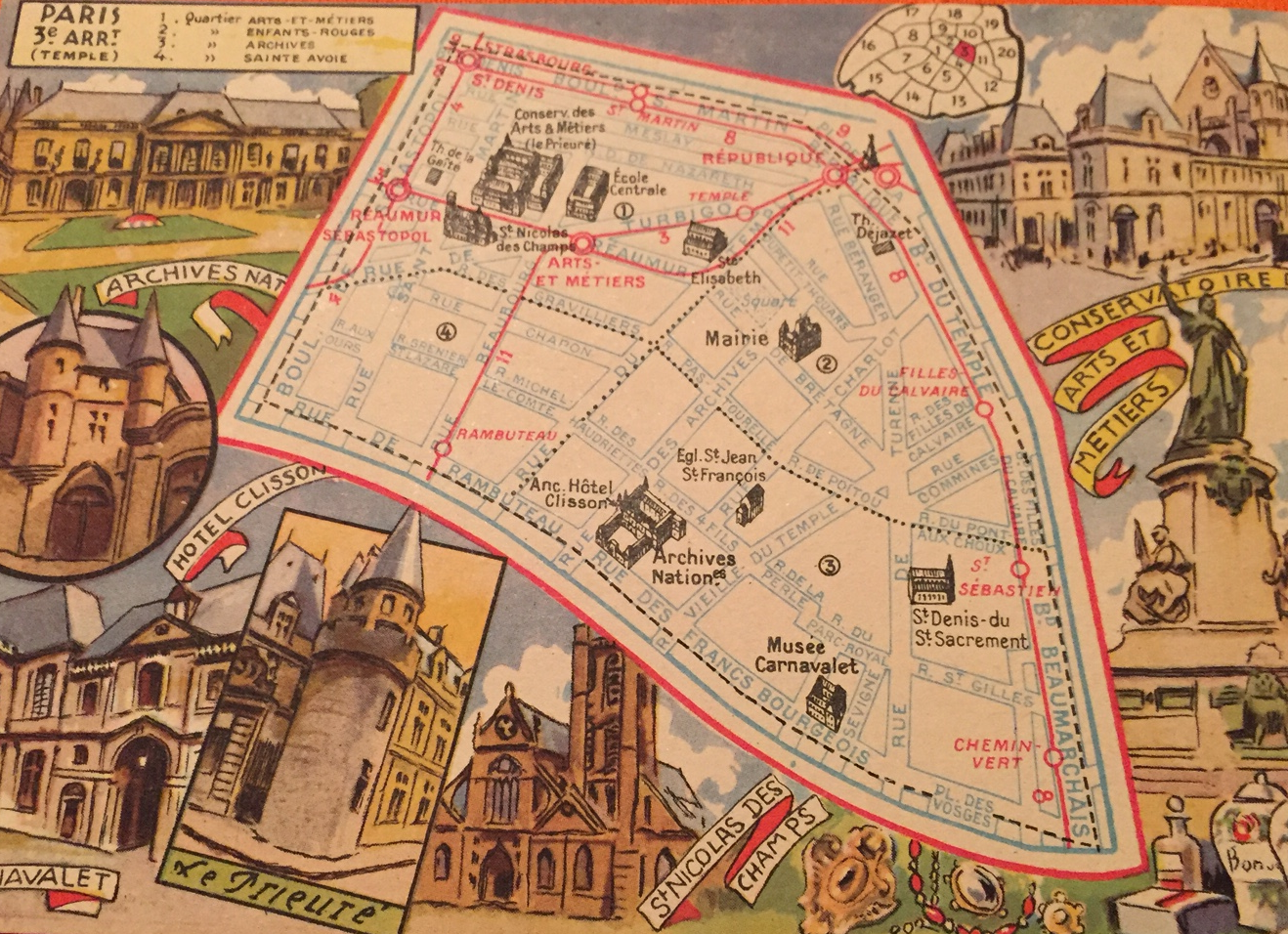
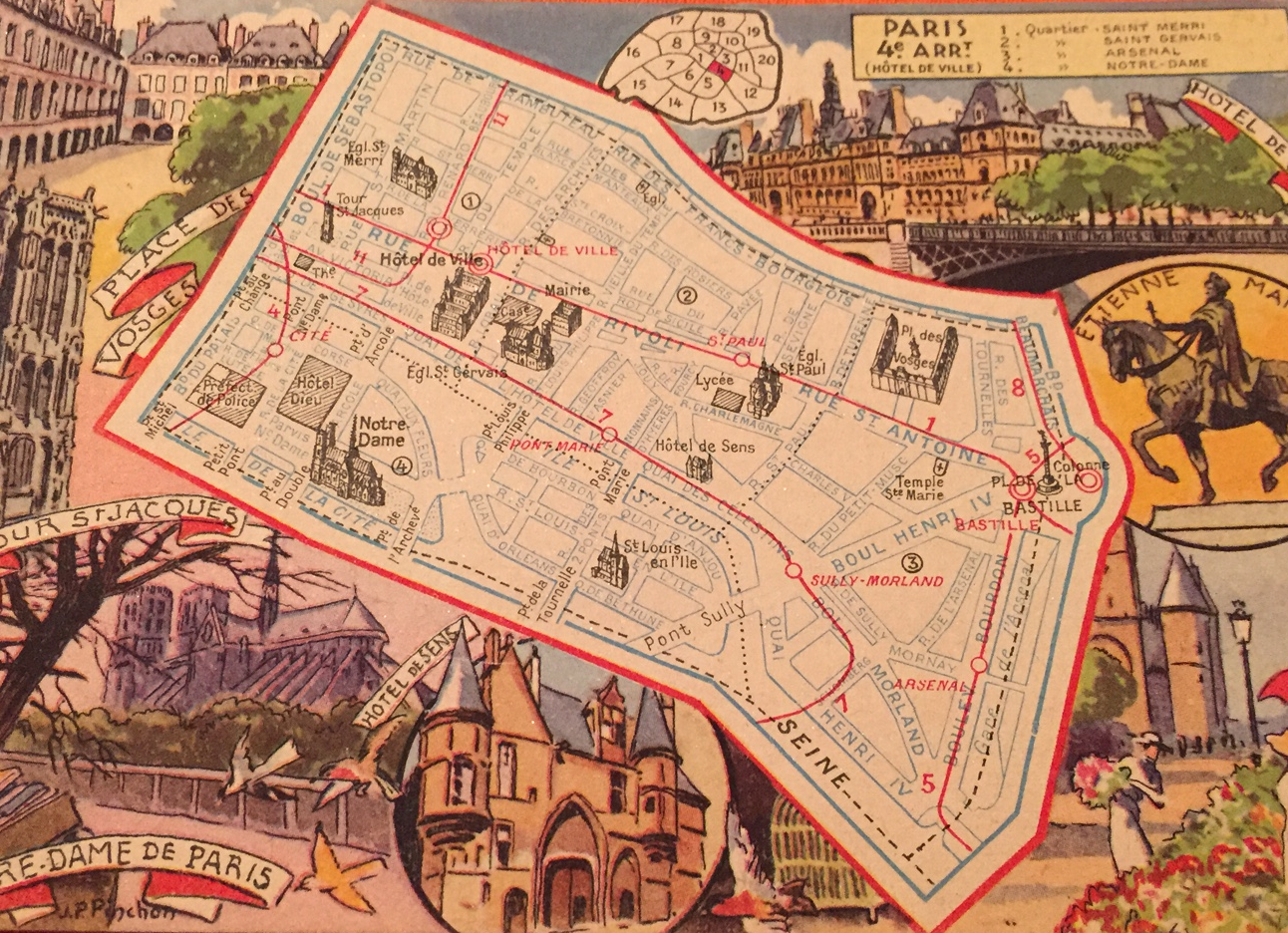
The Latin Quarter is rather confusingly the 5th district. On the left bank facing Notre Dame Cathedral it has some wonderful Roman and Medieval vestiges including the Roman Baths forming part of the complex called Cluny with a museum to the Middle Ages including the famous Lady and the Unicorn tapestry.The Pantheon Church looking like Saint Paul’s Cathedral with it’s dome and drumstick columns, the Sorbonne University and the Natural History Museum surrounded by the Jardin des Plantes. Hidden away in this district are some fascinating little twisting medieval streets and market areas such as around Maubert Mutualité and the rue Mouffetard close to where Ernest Hemingway lived . Metros Saint Michel, Cluny-Sorbonne,Maubert-Mutualité, Place Monge.
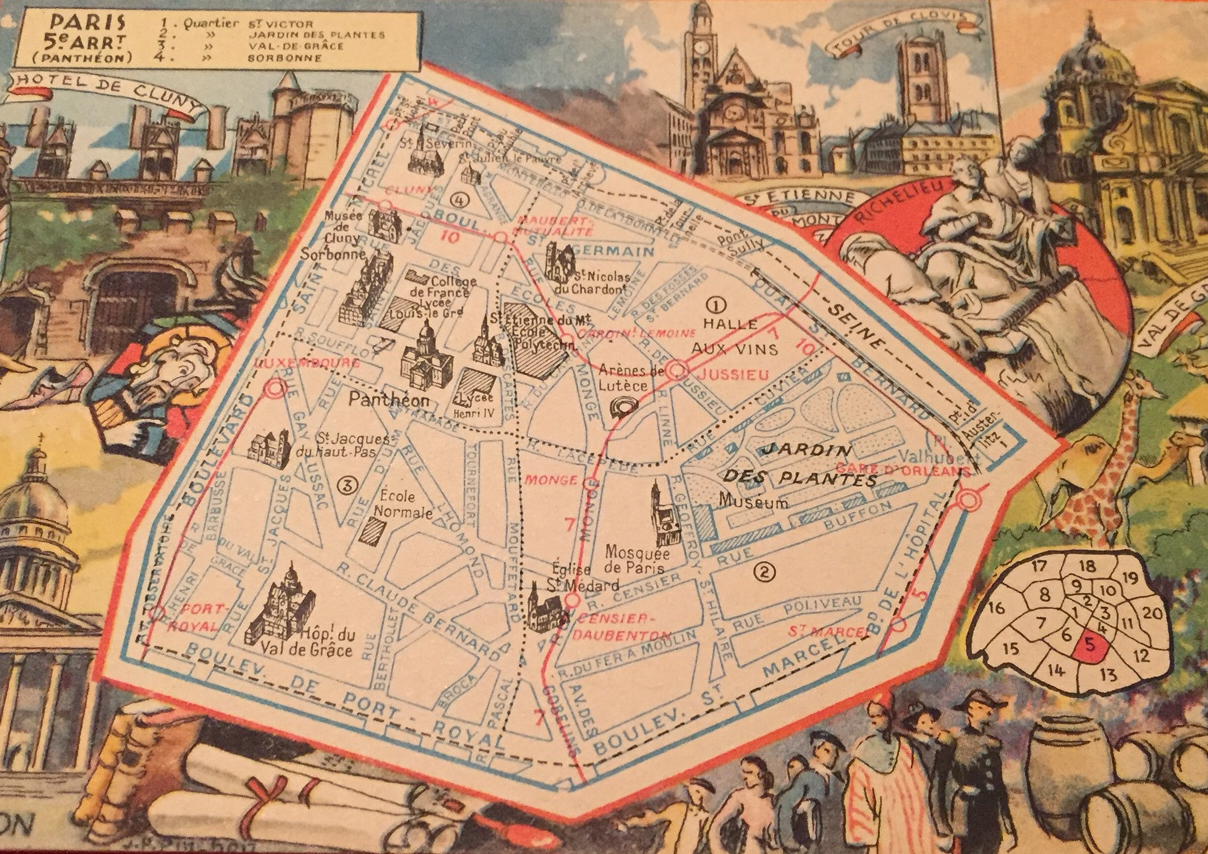
The 6th district is also on the left bank and is generally known as Saint Germain des Prés after the old monastery with a tower built before William the Conqueror invaded England in 1066. This is a very trendy area of literary cafés like Les Deux Magots, Café Flore and Brasserie Lipp, trendy fashion shops for youngsters that made Yves Saint Laurent call his shops ‘ YSL Rive Gauche’, Boutique Hotels , Publishers, Antique and Decorators Shops. This is where the Existentialist movement of Jean Paul Sartre,Simone de Beauvoir and Albert Camus took off, as well as the old Jazz clubs and the area of young post war writers like Francoise Sagan who wrote ‘Bonjour Tristesse’ when she was 21. Also it has the much visited Church of Saint Sulpice popular ever since Dan Brown featured it in his bestseller The Da Vinci Code, as well as the Jardin du Luxembourg , a favourite green park in the heart of Paris. Metros Saint Germain des Prés, Odeon,Saint Sulpice.
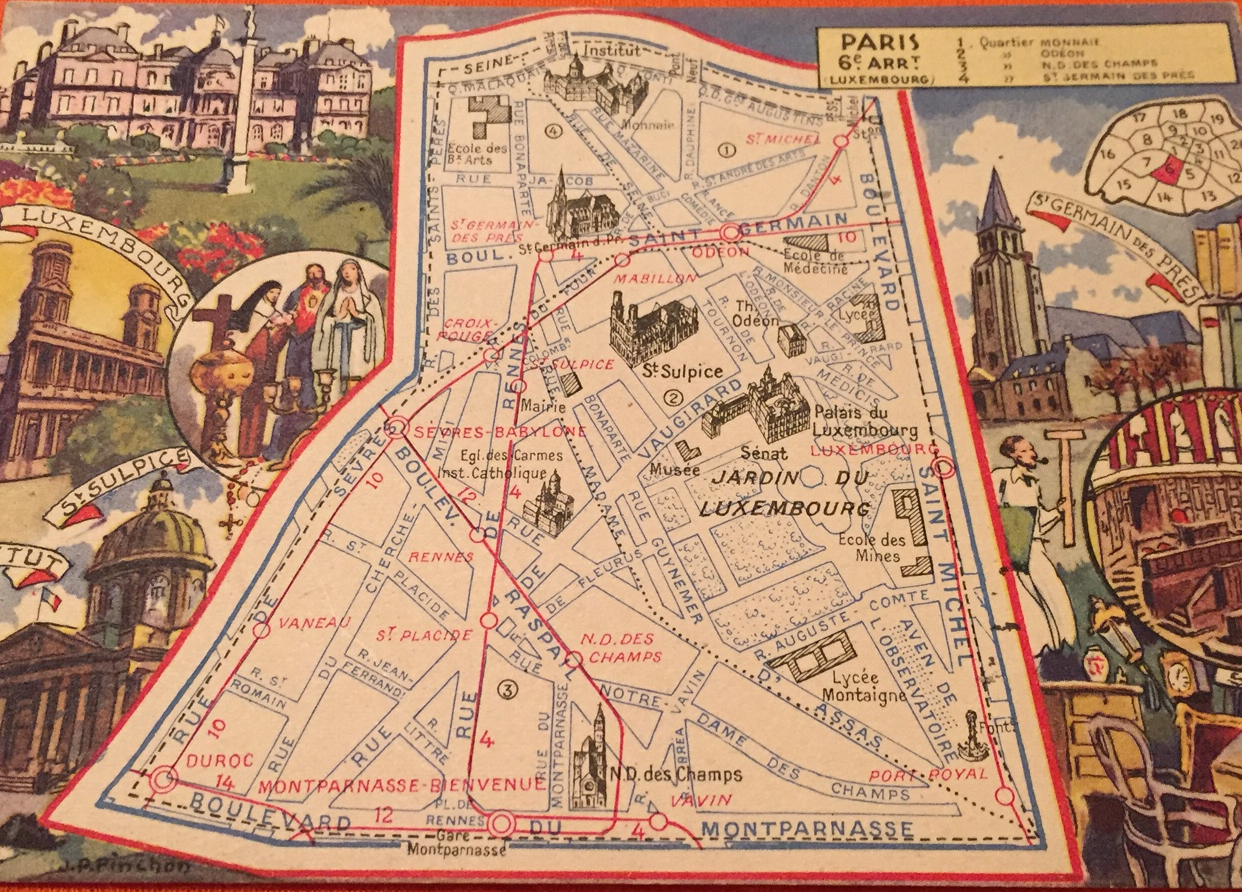
The 7th district is perhaps the richest district on the left bank and has fine buildings such as the French House of Parliament called National Assembly, two massive museums - the impressionist museum or Musée d’Orsay, the trendiest new Museum just opened in Paris called Quai Branly dedicated to non European Civilisations and Art. The only department store on the left bank is Bon Marché which was built by Gustave Eiffel and is one of the best stores in Paris. Also the old Military hospital of Louis XIV called Les Invalides and now the National Army Museum which includes Napoleon’s Tomb in a separate Chapel of Les Invalides as well as the Rodin Museum and the nearby Military School – Ecole Militaire, with views down the Champs de Mars gardens towards the Eiffel Tower. Metros Assemblée Nationale, Solferino, Varenne, Invalides, Sevres Babylone and Ecole Militaire.
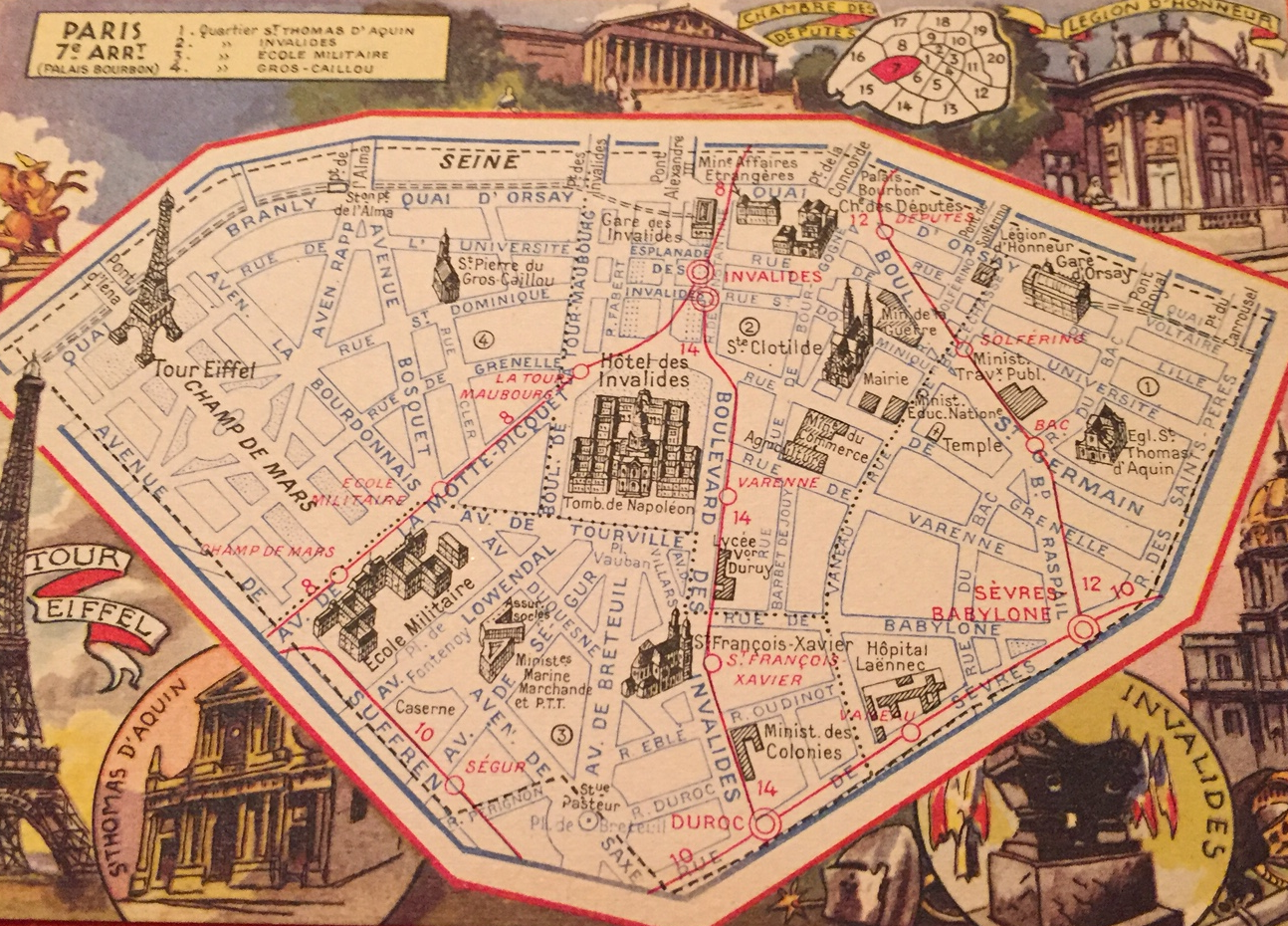
The 8th district surrounds the Champs Elysées , called the best address in Paris and the golden triangle according to Estate Agents. Framed at one end by the largest Square in Paris , the Place de la Concorde , the Avenue des Champs Elysées progresses past restaurants and theatres and the gardens of embassies on the right including the British Embassy, the American Ambassador’s Residence and the Presidential Palace called simply Elysée , on the left it passes the Grand and Petit Palais built for the World Fair of 1900 and now containing Museums and temporary Exhibition halls . There are 5 metro stations along the Champs Elysées which gives you some idea of its length : Concorde, Champs Elysée-Clemenceau, Franklin D. Roosevelt, George V, and Charles De Gaulle Etoile. The latter metro is of course beside the Arc de Triomphe which is at the top end of the Avenue des Champs Elysées.
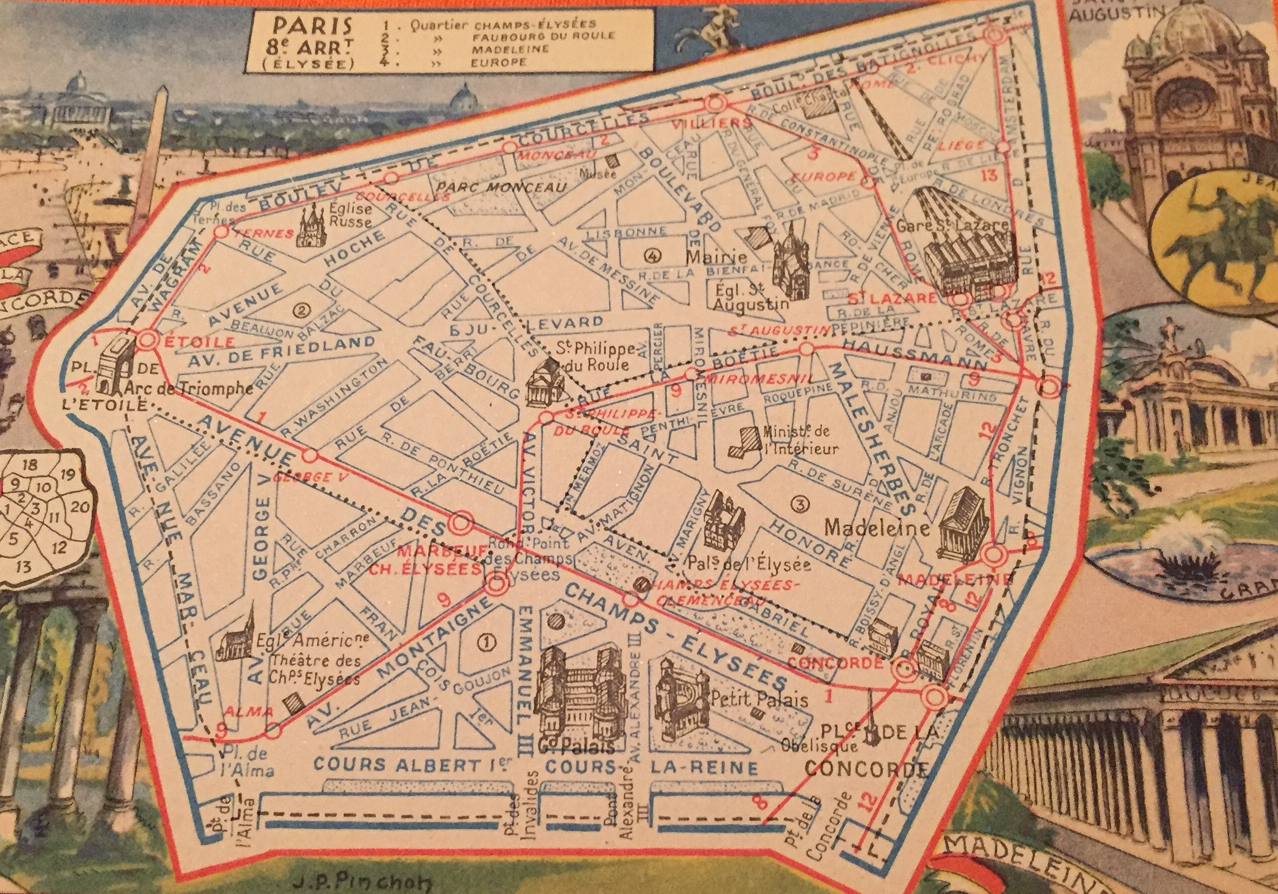
The 9th district is sometimes nicknamed the naughty ninth . It starts respectfully enough with the Paris Opera now called Opera Garnier after the architect who built it in 1874. Behind the Opera are the large department stores on the Boulevard Haussmann including Galeries Lafayette and Printemps. The naughty bit is at the extreme northern limit of the 9th where it meets the 18th district around the Place Pigalle. The so-called Red Light district of Paris is between Place Pigalle and Place Blanche where the famous Moulin Rouge Cabaret is located. Metros Opera, Pigalle and Blanche.
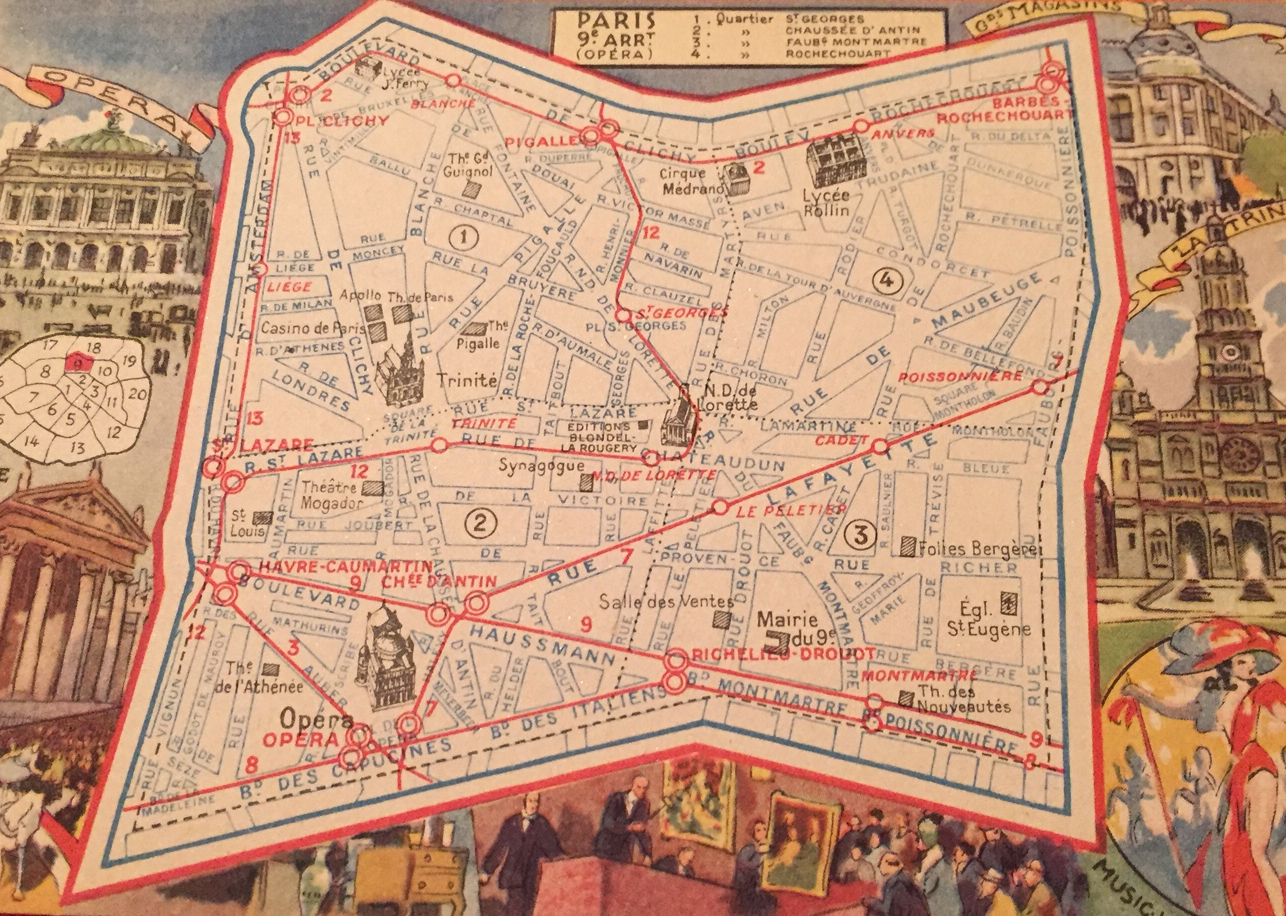
The 10th District contains little of interest except the large Railway Stations , Gare du Nord where the Eurostar from London comes in and the Gare de L’Est which has the latest and fastest TGV trains going north towards Germany via Rheims and the Champagne region. Metros Gare du Nord and Gare de L’Est. Not an area to hang around in although in recent years people have liked dining in the rundown Place Sainte Marthe . Not for the faint hearted however.
The 11th district has always been up and coming just like Islington used to be considered in London. A useful starting place is the Bastille , no longer with its fortress- knocked down in the Revolution , but with an anonymous office block said to be the new Bastille Opera,, go into the streets surrounding this Square like rue de la Roquette with its fashionable eateries. Rue Oberkampf towards Metro Menilmontant has also been favoured for its night life in recent years. It looks rough but the trendies like it. Metro Bastille or Menilmontant.
The 12th district- in the eastern part nothing much of interest except Place de la Nation where the guillotine once stood and the nearby Cemetery called Picpus where they chucked the bodies. The cemetery and chapel are fascinating and it contains the tomb of Lafayette- just look for the American Flag. Metros Nation and Picpus. By the River in the 12th district is the Gare de Lyon train station for TGV trains to the south of France. Paris to Marseille in 3 hours. The area called Bercy used to be where the Wine was offloaded from Barges and stored in Warehouses and now they have built a park and a Cinema complex they like to call a “village”.
The 13th district is called Chinatown but seems to be more likely Vietnamese. The Best store is called Tang Brothers between Metros Place d’Italie and Porte d’Italie. To liven up the 13th President Mitterand gave the go ahead to build a new National Library beside the River and it is called after him. Metro Bibliotheque Francois Mitterand. The books are in the towers and the readers are below ground.
Something must happen in the 14th district but the best place is for the dead- Montparnasse Cemetery. A place of pilgrimage to dead 20th century writers such as Jean Paul Sartre and Samuel Beckett. Metro Raspail.There is an interesting weekend flea market called Marché aux Puces de la Porte de Vanves in the avenues Sangnier and Lafenestre. Metro Porte de Vanves.
The 15th district is for those who cannot afford to live in the 7th.It has some ghastly high rises beside the Seine blocking out the view of the Eiffel Tower but some interesting market streets like rue du Commerce, a dull and dud so-called Antiques area called Village Suisse, but an interesting Weekend Book market at Parc Georges Brassens, 104 rue Brancion, Metro Porte de Vanves.
The 16th district is west of the Arc de Triomphe on the right bank. It is the largest of the 20 districts and considered one of the wealthiest.It developed in the 19th century from a series of villages called Auteuil and Passy and contains some interesting architecture including buildings by Hector Guimard, who designed the entrances for the Paris Metro, and by Le Corbusier and by Mallet Stevens. Metro Ranelagh or Jasmin is a good start to visit the buildings by these architects. At the Trocadero is the best view of the Eiffel Tower at night when it sparkles on the hour every hour from dusk until 1am, but be warned you won’t be alone as every tour bus , street vendor and pick pocket will be there . Metro Trocadero. You can escape to the various museums here at the Trocadero such as Musée de l’Homme basically an anthropological museum ,or the Maritime museum or the fascinating and super trendy newly opened and renovated Musée des Monuments Francais part of the Cité de l’architecture et du patrimoine ,1 Place de Trocadero. The main attraction are plaster casts of famous french buildings such as facades of churches.
The 17th district is residential just to the right of the Arc de Triomphe and although pleasant does not attract the casual visitor. Metro Monceau would take you to the attractive Parc Monceau which is actually in the 8th district.
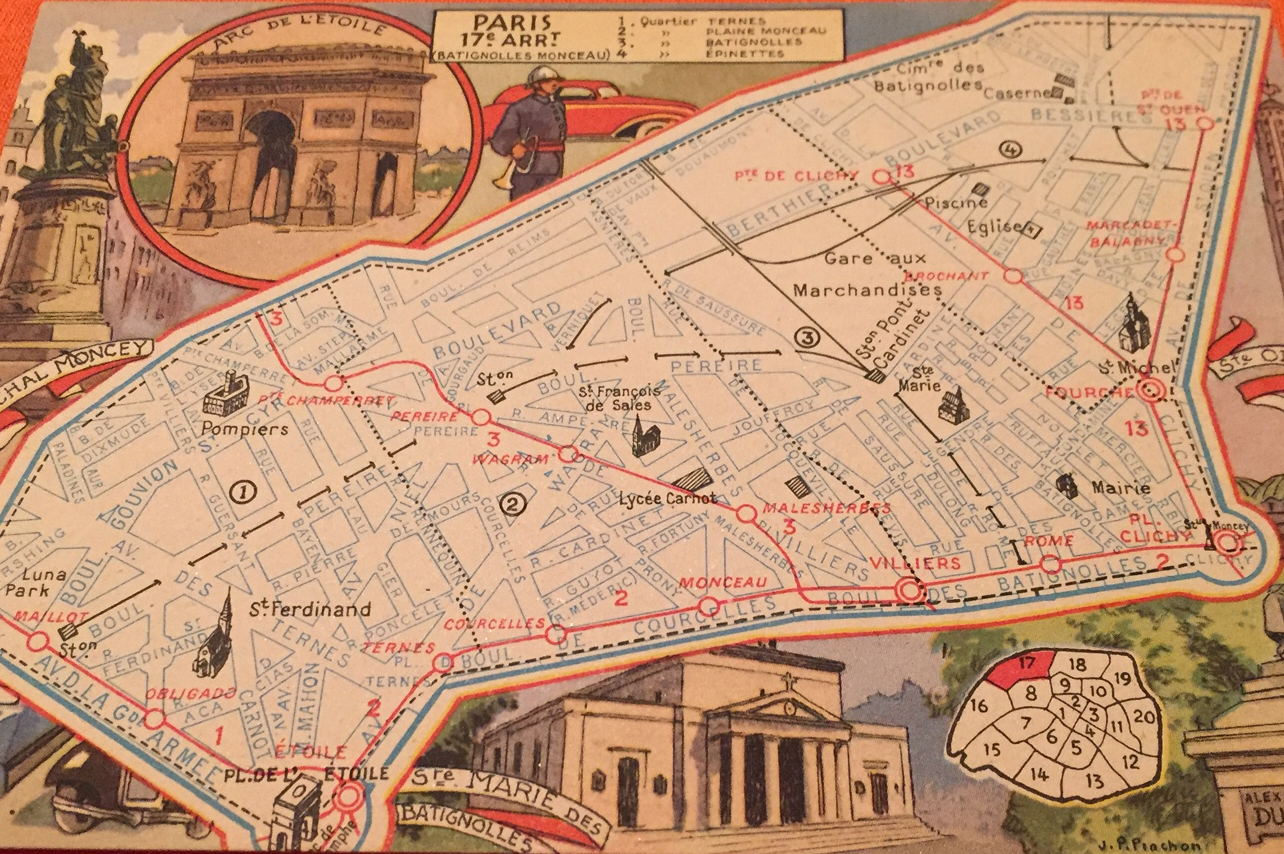
The 18th is usually referred to as Montmartre and is basically on a hill dominated by the white domed basilica of the Sacré Coeur and the adjacent small “artist’s square” . There is an excellent walk explaining why this became the hottest place for artists between 1860 and 1914 attracting , among others, Renoir, Toulouse Lautrec, Van Gogh and Picasso. Metros Abbesses and Blanche.
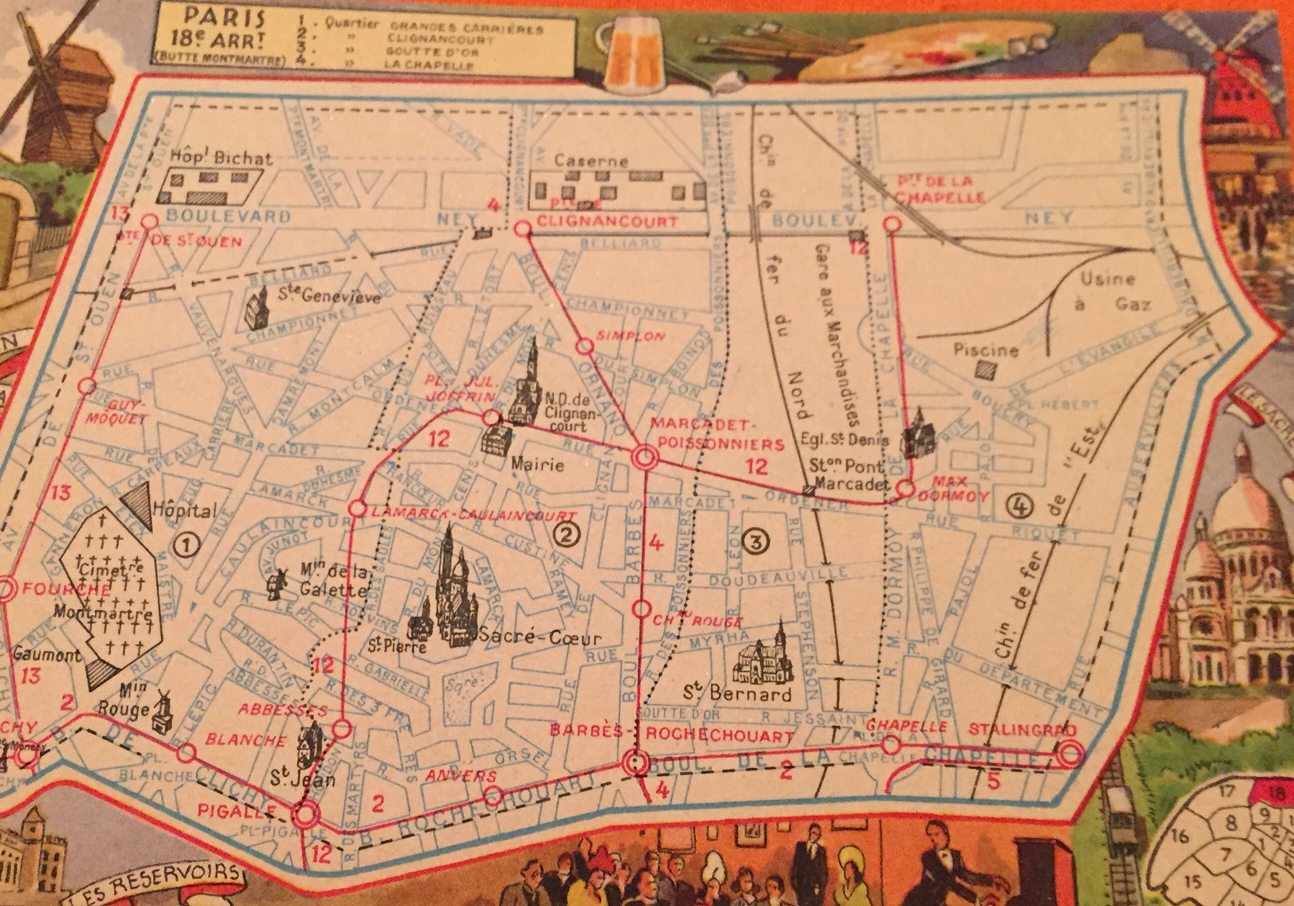
The 19th district has a reputation for being a new Chinatown around metro Crimée. The old horse slaughter market between Metro Porte de Pantin and Metro Porte de la Villette has been transformed into the Cité des Sciences et de l’Industrie and the Paris Conservatory of Music also moved here. The Buttes Chaumont is a 19th park created from a former quarry. An attractive open space in an otherwise crowded and not so nice area. A new 2400 seat concert hall Philharmonie de Paris, located in the Parc de la Villette and designed by Jean Nouvel, was opened in January 2015.
One goes to the 20th district to visit one of the great cemeteries of the World: Pere Lachaise covering over 100 acres and with one million dead. Chopin,Molière,Jim Morrison,Oscar Wilde,Edith Piaf, Modigliani,Yves Montand , Proust and Balzac are among the top 50 tombs.Metro Père Lachaise. On the other side of the 20th district where it meets the 10th
